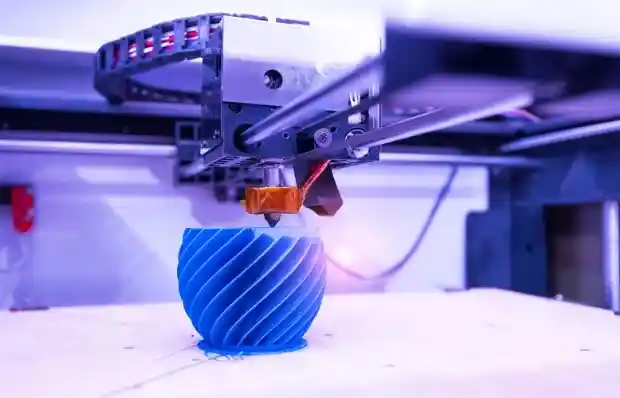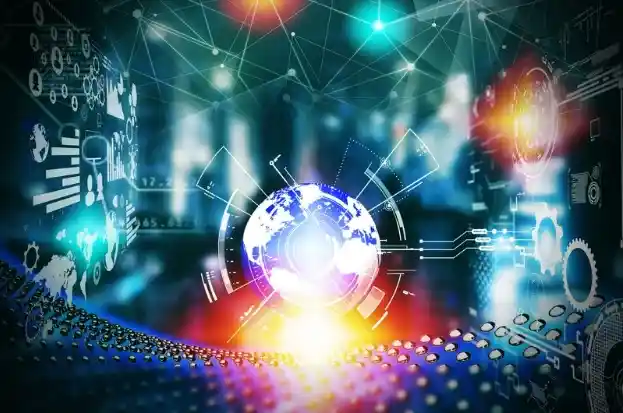3D659.com Blog: A Friendly Guide to Your 3D Printing Journey

Welcome to the 3D659.com blog, a site where creativity and technology meet to bring the latest in 3D Printing to everyone. If you’re curious about 3D Printing or want to explore its many uses, this guide will walk you through everything you need. From the basic steps to advanced techniques, 3D659.com offers a one-stop hub of resources designed for all levels, whether you’re a beginner just starting or an experienced professional. So, let’s dive into the world of 3D Printing and discover what makes this technology exciting!
What is 3D Printing?
3D Printing, also known as additive manufacturing, is the process of creating solid objects from a digital file. Instead of traditional manufacturing that removes material, 3D Printing builds objects layer by layer, making it highly customizable and efficient. Depending on the project, a 3D printer uses materials like plastic, resin, or metal. These printers allow users to turn digital designs into real-world objects, from small models to functional parts used in industries like healthcare and aerospace.
Why 3D Printing Matters Today
3D Printing has revolutionized design, manufacturing, and even healthcare. Here’s why it’s making a difference:
Customization
3D Printing makes it easy to create objects that fit specific needs. For example, in medicine, doctors can make custom prosthetics that fit patients perfectly, which helps them move comfortably. This level of customization also works well in other areas like fashion, where unique designs can be printed to suit personal tastes.
Printing parts or tools that match exact measurements save time from reworking items that might not fit. Overall, 3D Printing is a great way to make products more valuable and personal.
Saves Time and Money
3D Printing only uses the amount of material needed to create an item, meaning there is less waste. This is good for the environment and budgets, as you don’t need to buy extra material. Since 3D Printing is fast, it helps make models and prototypes faster than traditional methods.
This can lead to faster production times in businesses, meaning products get to customers sooner. For students or inventors, 3D Printing helps bring ideas to life more affordably.
Innovation and Creativity
With 3D Printing, people can make complex shapes and designs that can’t be made with regular tools. This opens up possibilities for new inventions and art projects. Designers can create unique models, engineers can develop advanced structures, and artists can make creative sculptures.
Because 3D printers can follow any digital design, there is freedom to experiment. This technology supports creativity and pushes people to think outside the box.
Educational Tool
3D Printing is an exciting tool for learning because it lets students and teachers bring ideas into the real world. In science classes, for example, students can make models of molecules, while in history, they might print ancient artifacts for study. It encourages hands-on activities that make learning more enjoyable.
Students can learn design, engineering, and problem-solving skills while having fun. 3D Printing in schools helps students be creative and understand complex concepts through making things themselves.
3D659.com Blog: A Resource for 3D Printing Fans
The 3D659.com blog is about helping people learn, grow, and connect through 3D Printing. It offers articles, tutorials, reviews, and community resources, all aimed at making 3D Printing more accessible. The blog covers a range of topics, including:
How-To Guides
If you are new to 3D Printing or want to learn new ways to make things, this guide will be helpful. It will take you through each step clearly and simply. You can learn how to set up your 3D printer, prepare materials, and print your objects. Each step will be explained slowly so you can follow along and understand.
Whether you are making small toys or more significant designs, the guide will show you how to do it from start to finish. It’s like having a teacher walk you through every part so you can learn at your own pace and feel confident with your projects.
Product Reviews
When you want to buy something, it’s important to know if it’s good or not. These product reviews will help you decide which 3D printer, material, or software to use. Reviews will tell you the pros and cons, meaning what is good about the product and what might need improvement.
For example, you’ll know if a printer is easy to use or makes excellent prints. Reviews also explain how long things last, how much they cost, and whether they are worth the Money. With this information, you can make intelligent choices and save time and Money on products that might not work for you.
Community Resources
3D Printing is more fun when you can share ideas and learn from others. There are many ways to get involved in the 3D printing community, such as joining online forums or attending events. People share their experiences, ideas, and even designs in these communities. You can ask questions, get answers, and see what others are making. It’s a great way to learn new tips and tricks and get inspired.
These resources will guide you on how to join these groups, attend local or online events, and meet other 3D printing fans. Being part of a community makes the process of learning even more exciting!
Latest Trends
The world of 3D Printing is constantly changing. New tools, techniques, and materials come out all the time. This section will help you stay up-to-date with the latest trends. You’ll learn about the newest 3D printers with special features or new materials that make your prints look even better. You might also learn about new software that makes it easier to design and print.
Knowing these trends will help you stay ahead and always have the best project tools. Whether you want to make things faster, cheaper, or better quality, these insights will keep you informed and ready for the future of 3D Printing.
Choosing Your First 3D Printer
Starting your 3D printing journey begins with selecting the right printer. Here are a few things to consider:
Type of Printing Technology
Three main types of 3D printing technology exist: FDM, SLA, and SLS. FDM (Fused Deposition Modeling) is the easiest and most popular for beginners. It works by heating and layering melted plastic, making it simple to create everyday items. SLA (Stereolithography) and SLS (Selective Laser Sintering) are more advanced and create very detailed, complex designs.
SLA uses a liquid resin that hardens with a laser, while SLS uses heat-fused powder. If you want more detailed prints, SLA and SLS are great options, but they may be more complicated.
Material Compatibility
Different 3D printers work best with certain materials. For example, PLA (Polylactic Acid) is a type of plastic that is easy to print, making it great for beginners. It’s also biodegradable, which means it’s better for the environment. ABS (Acrylonitrile Butadiene Styrene) is another type of plastic that is stronger and more durable, so it’s good for things that need to last longer.
When choosing a printer, make sure it can handle the materials you want, whether you need easy-to-use PLA or more arduous ABS for more substantial items.
Build Volume
Build volume is the space available on the 3D printer for creating objects. Different printers have different build volumes, meaning some are better for making large items, while others are good for smaller items.
Before choosing a 3D printer, consider the size of the things you want to make. A printer with a slight build volume will work fine if you plan to create miniature models. But if you make bigger objects, you’ll need a printer with a larger build area to fit those projects.
Learning to Use 3D Design Software
For 3D Printing, a digital model is created using special software. Some popular 3D design tools include:
TinkerCAD
TinkerCAD is an excellent choice for beginners because it has a simple interface that’s easy to learn. This program is often used by people new to 3D design and modeling. In TinkerCAD, you can create shapes by dragging and dropping basic 3D shapes like cubes, cylinders, and spheres.
You can design many different objects by moving, resizing, and combining these shapes. It’s also web-based, so you don’t need to download any software—just log in and start designing. This makes it perfect for students, beginners, or anyone who wants to create 3D models quickly.
Fusion 360
Fusion 360 is a powerful design software for more advanced projects. Unlike TinkerCAD, it’s meant for people who need a tool with more features to create complex models, like engineers or architects. Fusion 360 has tools to make precise shapes and assemblies and even test how a model would work in the real world.
Though more advanced, it offers tutorials and resources to help beginners learn. Fusion 360 works well for people who want to make detailed designs, try 3D Printing, or even make things that could be used in real life, like machine parts.
Blender
Blender is a unique, free software for creating 3D models, and it’s great for animation and modeling. Blender has a lot of tools that let you sculpt, color, and animate objects. Both beginners and professionals use it to create animated movies, special effects, and 3D art.
Blender’s interface has a lot of buttons and options, but once you get used to it, it’s mighty. Blender can do it all if you want to make a character, add colors, and even make them move. It’s free, so anyone can download it and start creating.
The 3D659.com blog guides using these software options, including tips on creating and adjusting your models for the best printing results.
Tips for a Successful 3D Print
Here are some steps to help ensure your prints turn out well:
Preparing Your Model
Before starting to print, check your model for any mistakes or errors. Sometimes, the design might have minor issues affecting how it prints. You can use special software tools to find and fix these problems. These tools scan your model to ensure everything is in place, such as ensuring no holes or misplaced parts.
It’s essential to check your design so the 3D printer can ideally create the object. Your print will turn out much better when the model is clear of issues!
Printer Calibration
Calibrating your 3D printer is one of the most important steps before starting to print. Calibration means adjusting your printer so it works correctly and prints accurately. This process ensures that the print head moves in the right direction and that the bed is at the correct height.
If the printer is calibrated correctly, it could result in better-quality prints with mistakes or misalignments. By carefully calibrating your printer, you ensure your prints will be neat, even, and look just like the design.
Bed Adhesion
Your print must stick well to the print bed for it to come out correctly. If it doesn’t stick, it can slide around or lift off during Printing, ruining your project. To help the print stay in place, you can use special adhesives or surfaces that make it easier for the print to bond.
Some people use glue sticks, painter’s tape, or unique printing mats to help the print stay on the bed. A strong adhesion is key for a successful print, as it prevents your design from shifting and keeps it looking great.
Selecting the Right Filament
The filament you use for Printing is important because each type has different qualities that affect how the print turns out. PLA is a good choice for beginners because it’s easy to use and works well with most 3D printers. It’s also eco-friendly.
ABS is a stronger, more durable filament, making it perfect for items that need to last longer, like tools or toys. PETG is another good option because it’s flexible but solid, making it ideal for prints that need to bend or withstand stress. Choose the suitable filament based on what you need your printed object to do!
Post-Processing Techniques for a Finished Look
Once your object is printed, you can take it to the next level with post-processing:
Cleaning and Sanding: Removing any supports and sanding the surface gives a smoother finish.
Painting and Coating: Add color and durability by painting or applying a protective layer, like epoxy.
3D Printing Applications
3D Printing has uses across various fields:
Healthcare
Healthcare is all about helping people feel better and live healthier lives. One important part of healthcare is making custom prosthetics—particular body parts like arms, legs, or hands—designed just for the person who needs them. These custom parts can help people who may have lost a body part due to an accident or illness.
Doctors also use 3D models to practice surgeries before performing them on patients. This way, they can see what’s happening inside the body without cutting anyone open. This makes surgeries safer and more effective, helping people recover faster.
Aerospace
Engineers design and build things like airplanes and spacecraft in the aerospace world. One of the biggest challenges is making these machines light enough to fly but strong enough to handle the pressure of air and space. Using lightweight parts helps solve this problem.
These parts are made from unique materials that are both strong and light, making it easier and faster to build airplanes or rockets. Making these parts more straightforward to handle and less heavy makes the manufacturing process quicker and less expensive. This helps engineers save time and Money while creating safer and more efficient aircraft.
Education
In education, students must stay engaged and enjoy their learning. One way to make learning fun and exciting is by using models and tools that bring subjects to life. For example, instead of just reading about the human body, students can use 3D models to see how the organs work together.
Teachers also use interactive tools to help students understand math, science, and history. These tools allow students to explore, create, and learn in new ways. Students can better understand complex topics and enjoy their education by making learning interactive.
Home Projects
Home projects are a fun way to make your house feel like your personal space. You can create unique items like decorations, toys, or even parts to fix things around the house. With tools like 3D printers, people can make exactly what they want, whether it’s a new lamp for the living room, a special toy for a child, or a part to fix a broken appliance.
Making custom items at home means you can get precisely what you need, and it’s a great way to be creative. Home projects are fun and practical, helping you improve your living space in your own unique way.
Troubleshooting Common Issues
Like any tech, 3D Printing can face challenges. Here are some tips for dealing with common problems:
Print Failures
Sometimes, 3D prints come out differently than expected. Problems like warping (where the print bends or curls) and layer separation (when layers don’t stick together correctly) can happen. These issues are common, but don’t worry – they can be fixed! It’s important to try different settings on your 3D printer, like adjusting the temperature or speed.
Also, you can use different materials to see which works best for your project. If something doesn’t work, keep experimenting. Learning from mistakes is part of the process, and soon, you’ll find the correct settings to make your prints turn out just right.
Material Limitations
Not all materials are identical, and some are better for specific projects. For example, some materials are strong and perfect for making solid, rigid objects, while others are flexible or clear. Before you start printing, research which material fits your project best.
Some materials may be too soft or brittle for your idea, while others might be too hard. It’s important to know what each material can do so that you can choose the right one. You might need to try different filament types until you find the one that works perfectly for your project.
Getting Involved in the 3D Printing Community
The 3D659.com blog encourages users to join the larger 3D printing community:
Online Forums
Online forums like Reddit are places where people from all over the world talk to each other. You can join these groups and ask questions about 3D Printing or share your ideas and projects. People usually help each other by giving tips, advice, and sometimes even free plans to make things with a 3D printer.
You can join these groups without being an expert. They are great for learning, sharing, and meeting people with the same interests. You can also find specific forums dedicated to 3D Printing, so getting the help you need is easy.
Social Media
Social media platforms like Instagram and Facebook are full of 3D printing fans. Many people share their projects, ideas, and even tutorials on creating cool things with a 3D printer. You can learn new tips or find inspiration for your designs by following the correct pages.
You can also join 3D printing groups where people post questions and answers. If you share your work, you might get feedback that helps you improve. Social media makes it easy to connect with others and stay updated with the latest 3D printing news.
Events and Workshops
Going to events like maker fairs is a great way to learn more about 3D Printing and meet people who are good at it. These events often have workshops where you can learn how to use a 3D printer or see others’ creations. You might even get to try out a 3D printer yourself.
Events like these are fun because they bring together people excited about creating things. You can ask questions, get inspired by others, and make new friends who share your interests in 3D Printing. They are a fun way to learn and discover new ideas.
Conclusion
The 3D659.com blog is a valuable resource for anyone interested in 3D Printing, from beginners to experts. It covers everything from getting started to exploring advanced techniques. By connecting with the 3D printing community, you can continue to learn, experiment, and bring your ideas to life. Whether you’re creating for fun or work, the 3D659.com blog supports your 3D printing journey. If you also want to read about Summer Clover Cheat Engine then visit that post.
FAQs
What topics are covered on the 3D659.com blog?
The blog includes guides on 3D Printing, industry trends, reviews, and tutorials. It explores the latest technologies in 3D Printing, offering insights into new tools, materials, and applications. The blog also discusses best practices, product recommendations, and troubleshooting tips.
How often is new content posted?
Regular updates keep users informed about the latest in 3D Printing. New articles, tutorials, and reviews are posted frequently to reflect changes in technology and trends. The blog strives to provide fresh, relevant information to ensure users stay updated with innovations in the field.
Can I request specific topics?
Yes, readers can suggest topics for future posts. The blog encourages feedback from its audience and is open to ideas that would help improve content. Whether it’s a question about specific 3D printers, materials, or advanced techniques, user suggestions are highly valued.
Are the reviews unbiased?
Yes, the blog strives to offer honest reviews to help readers make informed decisions. Reviews are based on thorough testing and real-world use cases, ensuring that readers can trust the information provided. The goal is to offer transparency and unbiased opinions for optimal decision-making.





